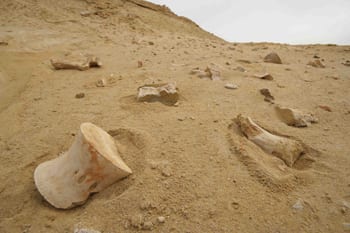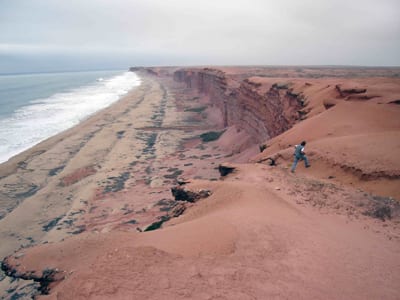 Fossils in the rock outcrops of the coast of Angola in Africa are a “museum in the ground,” says SMU vertebrate paleontologist Louis L. Jacobs. Louise Redvers with Agence France Presse interviewed Jacobs. BBC and others published the story “Angola: Final frontier for fossils.”
Fossils in the rock outcrops of the coast of Angola in Africa are a “museum in the ground,” says SMU vertebrate paleontologist Louis L. Jacobs. Louise Redvers with Agence France Presse interviewed Jacobs. BBC and others published the story “Angola: Final frontier for fossils.”
“Angola is the final frontier for palaeontology,” Jacobs is quoted. “Due to the war, there has been little research carried out… but now we are getting in finally and there is so much to find.
“In some areas there are literally fossils sticking out of the rocks, it is like a museum in the ground.”

Excerpt:
By Louise Redvers
BBC News, Luanda
In the past, most people who went to Angola were searching for oil, diamonds or landmines.Now, the country is also proving a big draw for fossil hunters — known in the scientific community as palaeontologists — who have described Angola as a “museum in the ground”.
Angola was closed off for many years because of its three-decade long civil war, which only ended in 2002, so few scientists have had the chance to visit.
We believe there are more dinosaurs to be found, we just need the facilities and means to dig for them
Those getting the chance now are not leaving disappointed. Louis Jacobs, of the Southern Methodist University in Dallas, says:
“Angola is the final frontier for palaeontology. Due to the war, there has been little research carried out… but now we are getting in finally and there is so much to find.
“In some areas there are literally fossils sticking out of the rocks, it is like a museum in the ground.”
Fossil-hunter heaven
Louis Jacobs is part of the “PaleoAngola” project whose biggest find to date was in 2005, when five bones from the front-left leg of a sauropod dinosaur were discovered on a cliff at Iembe, around 65 km (40 miles) north of the capital, Luanda.
Also:
Red Orbit
Google.com
The Jakarta Globe
Jacobs’ work in Angola is jointly funded by the Petroleum Research Fund and National Geographic Society.
A professor in Dedman College‘s Roy M. Huffington Department of Earth Sciences, Jacobs joined SMU’s faculty in 1983. Currently he has projects in Mongolia, Angola and Antarctica. His book, “Lone Star Dinosaurs” (1999, Texas A&M University Press) was the basis of an exhibit at the Fort Worth Museum of Science and History that traveled the state. He is consulting on a new exhibit, Mysteries of the Texas Dinosaurs, which is set to open in the fall of 2009.
Related links:
Louis L. Jacobs
Roy M. Huffington Department of Earth Sciences
Dedman College of Humanities and Sciences
Jacobs in Antarctica
 Fossils in the rock outcrops of the coast of Angola in Africa are a “museum in the ground,” says SMU vertebrate paleontologist
Fossils in the rock outcrops of the coast of Angola in Africa are a “museum in the ground,” says SMU vertebrate paleontologist